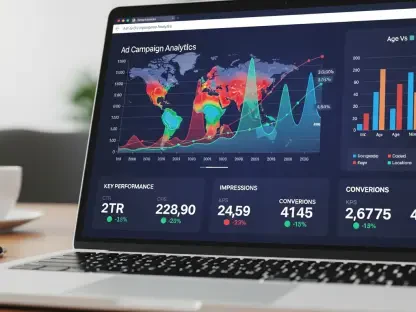As we approach 2025, the public relations (PR) industry stands on the brink of transformative change, largely driven by the rising influence of Gen Alpha and breakthroughs in artificial intelligence (AI). These factors are expected to reshape the methods and strategies employed by PR professionals, compelling them to rethink traditional approaches and adapt to new paradigms. Leading professionals across various PR and communication fields have shared their insights on the anticipated developments, focusing on emerging trends and strategies vital for thriving in this evolving landscape. Understanding these shifts is crucial for brands seeking to engage their audiences effectively and maintain relevance in a rapidly changing world.
Understanding the Target Audience: Gen Alpha
Gen Alpha, frequently referred to as the “AI generation,” is predicted to significantly impact cultural and industry trends as we move closer to 2025. This demographic, born into an era defined by digital nativity, is characterized by their seamless integration with technology and rapid adoption of online trends. For PR professionals, this means developing sophisticated communication strategies that cater specifically to Gen Alpha’s preferences, balancing trendy engagement with genuine brand authenticity. Wendy Joong, SVP of Insights and Creative Strategy at WE Communications, underscores the importance of comprehending Gen Alpha’s unique expectations, emphasizing that brands must resonate culturally and align with individual vibes to effectively connect with this generation.
As Gen Alpha’s influence continues to grow, PR strategies must evolve to address their distinct demands. This entails ensuring that messaging not only coincides with current trends but also reflects personal values and digital habits. The emphasis on authenticity is paramount, as this generation values genuine representations over polished corporate personas. Brands that successfully navigate this dynamic will find themselves well-positioned to foster meaningful connections and loyalty among this digitally savvy audience. Joong’s insights highlight the necessity for PR professionals to remain adept at balancing trend responsiveness with brand integrity, ensuring lasting engagement with Gen Alpha.
The Rise of Influencer Marketing
Influencer marketing has been steadily gaining traction and is becoming an integral component of PR strategies, especially as we head towards 2025. The creator economy is projected to reach a staggering $500 billion by 2027, making influencer-driven thought leadership an essential tool for brands looking to bolster their visibility and credibility. In particular, B2B brands are increasingly recognizing the value of leveraging influencers to create personalized and reliable marketing approaches that resonate with their target audiences. Tom Pepper, Senior Director of Marketing Solutions at LinkedIn, emphasizes the growing importance of expert-driven content in the consideration stage of the buying process, which significantly drives trust and influences purchasing decisions.
As the influencer market expands, PR professionals must strategically collaborate with influencers to enhance their brand’s visibility and forge deeper connections with their audience. By tapping into the authentic and engaging content that influencers produce, brands can effectively communicate their message in a manner that feels both personal and credible. This trend signifies a shift towards more customized and trustworthy marketing tactics, where the influencer’s voice becomes a powerful conduit for brand storytelling. Consequently, the rise of influencer marketing underscores the imperative for PR professionals to adeptly integrate influencer partnerships into their overarching strategies, ensuring a strong and authentic brand presence in the digital sphere.
Human Interest Storytelling in Healthcare
In the highly competitive healthcare sector, human interest storytelling is emerging as a pivotal strategy for creating emotional connections and building trust with audiences. Authentic patient stories, highlighting individual challenges and the positive impact of healthcare solutions, offer a compelling means to cut through the noise and engage target audiences on a deeper level. Danielle Ruckert, VP and Healthcare Lead at RH Strategic Communications, notes that these narratives play a crucial role in humanizing healthcare companies, fostering brand loyalty, and enhancing public perceptions.
By prioritizing authenticity and emotional resonance, healthcare PR professionals can craft stories that not only inform but also inspire and move audiences. These narratives offer a unique opportunity to showcase the tangible benefits of medical advancements and humanize the often-impersonal world of healthcare. As patients and consumers increasingly seek relatable and meaningful content, the emphasis on genuine communication strategies becomes indispensable. Ruckert’s insights elucidate the power of human interest storytelling in fostering trust and engagement, underscoring the need for healthcare brands to embrace this approach to effectively connect with their audiences.
Blending Traditional and Digital Media
The evolving media landscape presents both challenges and opportunities for PR professionals as digital platforms and influencers continue to disrupt traditional media. To effectively tell their stories across diverse channels, PR practitioners must invest in custom content creation, such as articles, white papers, and social media strategies. Julie Karbo, CEO and Founder of Karbo, discusses the imperative for adaptability and targeted messaging in the tech PR domain. With fewer reporters covering broader beats due to media consolidation, the necessity for tailored content has never been more critical. This approach ensures that companies can maintain a strong presence in both traditional and digital media, leveraging a balanced strategy to reach their audiences.
The convergence of traditional and digital media requires PR professionals to be nimble and innovative in their content strategies. By harnessing the strengths of both mediums, they can craft comprehensive campaigns that resonate with a wide array of audiences. This dual approach not only amplifies the reach of their messages but also enhances engagement by catering to different consumption preferences. As Karbo highlights, the ability to adapt and create targeted content is essential in navigating the complex media environment, ensuring that brands remain relevant and influential across various platforms. Ultimately, the blend of traditional and digital media offers a strategic advantage, enabling PR professionals to effectively convey their stories and bolster their brand presence.
Positive Storytelling Amid Political Tensions
In a climate marked by political tensions and contentious headlines, positive and uplifting narratives offer a refreshing escape for audiences. There is a growing public desire for content that inspires and provides a hopeful perspective, reflecting a broader shift towards feel-good stories amid the prevalence of negative news. Pam Anderson, Associate Director of PR at 829 Studios, argues that positive storytelling can deeply resonate with audiences, shaping public sentiment and fostering a more optimistic outlook.
The emphasis on positive storytelling amidst political tensions highlights the role of PR professionals in crafting narratives that not only inform but also uplift and inspire. By focusing on stories that evoke positive emotions and provide an antidote to the often divisive news cycle, brands can build stronger connections with their audiences. This approach underscores the power of storytelling in shaping perceptions and creating a positive impact, offering a counterbalance to the pervasive negativity in media discourse. As Anderson illustrates, the strategic use of uplifting narratives can help PR professionals cultivate a more engaged and hopeful audience, reinforcing the significance of storytelling in influencing public sentiment.
The Challenge of Generative AI and Misinformation
Advancements in generative AI present significant challenges for PR professionals, particularly in addressing the rise of credible misinformation. As AI-generated content becomes increasingly sophisticated, companies may face heightened attempts to provoke and falsely portray corporate responses, leading to genuine public backlash. Bradley Akubuiro, Partner at Bully Pulpit International, underscores the vital need for brands to establish strong, trusting relationships with their key stakeholders. In an era where misinformation can spread rapidly, trust will become the cornerstone of effective communication.
Navigating the complexities of generative AI and combating misinformation demands that PR professionals remain vigilant and proactive in their strategies. Establishing and maintaining credibility requires robust, transparent communication practices and a commitment to truthfulness. Akubuiro’s insights highlight the importance of fostering trust in all stakeholder relationships, ensuring that brands can weather the storm of misinformation and maintain their integrity. As the digital landscape continues to evolve, the ability to effectively address and counter misinformation will be crucial for sustaining public confidence and protecting brand reputation.
The Resurgence of Print Media
Despite the overwhelming dominance of digital media, there is an observable resurgence in print media, driven by consumer fatigue with digital screens and a renewed appreciation for tangible content. Print media provides a lasting, tactile experience that complements the immediacy and interactivity of digital platforms. Jon Skogmo, CEO of LOST iN, notes this trend and highlights the complementary nature of print and digital media, where print offers a more enduring and thoughtful engagement.
The resurgence of print media represents a broader recalibration in media consumption, where intentionality and quality take precedence. This shift presents new opportunities for PR professionals to explore diverse storytelling formats and create deeply immersive experiences. By integrating print and digital strategies, brands can offer a multifaceted approach that caters to varied audience preferences. Skogmo’s observations underscore the evolving landscape, where both print and digital media hold significant value, each contributing uniquely to the storytelling process. This trend emphasizes the importance of versatility and innovation in PR strategies, ensuring that brands can effectively engage their audiences through multiple channels.
Authenticity in Thought Leadership
As we near 2025, the public relations (PR) industry is on the verge of significant change, primarily driven by the growing presence of Gen Alpha and advances in artificial intelligence (AI). These factors promise to revolutionize the techniques and strategies PR professionals use, urging them to rethink traditional methods and adapt to new models. Leading experts from various PR and communication sectors have offered their perspectives on the anticipated changes, emphasizing emerging trends and crucial strategies for succeeding in this evolving landscape. Recognizing these transformations is essential for brands aiming to connect with their audiences effectively and maintain relevance in a swiftly changing environment. As Gen Alpha’s influence grows and AI continues to advance, PR professionals must stay informed and agile to navigate these changes successfully. The ability to adapt to these new paradigms will be a key differentiator for brands aiming to thrive in a dynamic and fast-paced world.









